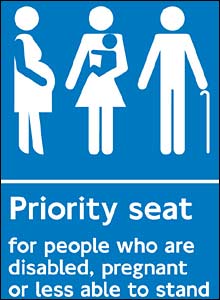A beginner’s guide to the London Underground
A beginner’s guide to the London Underground
If you’re new to London, it won’t be long until you need to use the famous London Underground! It recently celebrated its 150th birthday, making it it the oldest underground system in the world, and it has 270 stations and 402 km (250 mi) of track.
There are a few (under)ground rules to follow so, whatever you’ve called it before – the metro, subway, U-Bahn, underground – here’s your beginner’s guide to the Tube…

1. Figure out how to get from A to B
You can easily pick up a copy of the iconic Tube map in any station, or you could download a mobile app that’ll do the job for you. We’re fans of City Mapper, an app which finds the best route for you – whether it be walking, bus, tube or train – and it even tells you how long it will take.
2. The Tube is your Oyster!
An Oyster card is a plastic card that you can load credit onto and use it to pay for your travel around the city. It works on buses as well as trains, and as London buses no longer accept cash, it’s a really good idea to get one! You can buy an Oyster card from Information Centres and stations around the city – find out more on the Transport for London website (aka TFL FYI). Always have your Oyster card easily accessible to get through the ticket barriers quickly.

3. Stand on the right side
When you’re going up or down the escalator, remember to stand on the right or, if you’re in a hurry, walk on the left. This will be easy to remember because everyone else is doing it too!
4. Walk along the platform
When you get onto the platform, walk further along. People often congregate around the entrance, which is really annoying when there are a lot of people. If you walk along, there will be less people and the carriages at the end of the train are usually emptier than the middle. Wins all round!
5. Let people get off
If the train carriage is super busy, you should wait to let people leave the train before you hop on. Similarly, it might be better to wait for the next train (this is usually only a few minutes). Don’t try and squeeze on – there might not be any space for you and obstructing the doors will cause delays. Don’t be this dude —>
6. Be aware of priority seats
The first few seats near the door are usually priority seats – this means that they’re reserved for those who are less-able to stand, like people who are disabled or pregnant. You’re welcome to use these seats, but you should offer it up if someone gets on who need a seat. Londoners will be very grateful to you if you do this! This is the same on buses and trains – so always looks out for signs like this:
7. Don’t hog the seats
Don’t take up seats if you don’t need them! Your bag probs doesn’t need its own seat. But – whatever you do, wherever your London adventures might take you – don’t be this guy :/
Our Advantages
Quality Work
Unlimited Revisions
Affordable Pricing
24/7 Support
Fast Delivery
